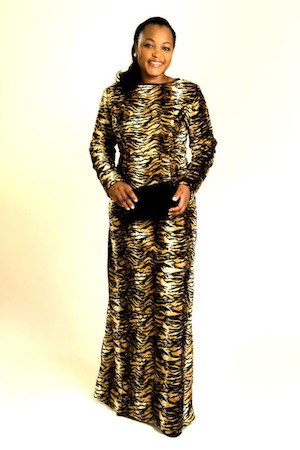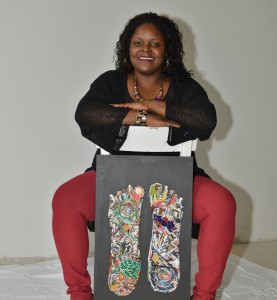
Fitsame Teferra an accomplished Ethiopian publisher of children’s books is making reading stories a pleasant adventure for kids of African descent born here in Germany.
Her recent endeavour has seen story lines picked from a contemporary Swahili society, and translated into German for kids of Kenyan descent. She says authentic children stories are quickly being replaced by the internet and social media, and therefore her books help to fill the gap.
Before coming to Germany, Fitsame had 30 books under her belt, all published in Amharic. She worked with several children projects in Ethiopia, including Save the Children, where local stories about children came to life.
She narrates that born out of a passion for books, she noticed that although literal publications were diversifying in character and production, there were few books targeting children.
A business management graduate, Fitsame would idealise her new conviction that “children’s voices need to be heard”. Children stories must be told in a language and illustrations that were representative of the children the books were aimed at. She explained.
She says her concept has two goals: for kids to see and relate to themselves, and to learn a new language. This is especially for African children born in Germany and who have an extra language from their parents’ country of origin.

Fitsame believes that the books are media for cultural exchange through language. The books are illustrative and contain basic knowledge like body parts, plants and animals, that are easy for beginners in a new language to learn.
“I once went to this event and the kids were so excited to meet this person who represented them, and spoke the language their parents speak”. She shares of her experience of how the books are stimulating the curiosity of children.
The books are written in Tirgyina for Eritrea and Ethiopia, there is Amharic and Oromo, Swahili, English and Dutch all with their German translations.
She says that once the book is written an expert language translator is engaged. Interestingly, Fitsame also gets children to participate in the book projects.
She uses stories from the location of the language e.g Swahili for Kenyans with its German version in translations.
The idea is to give a combination of two worlds, while the story is set in Germany, the language and cultural translations helps the children to see their African world and environment.
It also involves a transnational cultural translation for instance bringing stories from Ethiopia and telling them in German or within an environment in Germany. In addition, stories set in Germany explain what children can relate to in their daily lives.
“It came as a shock to me that when I arrived in Germany, the only characterization of Africans was advertisements that depicted poverty, malnutrition and disease”. She explains.
What disturbed her is that if children who have grown in Germany and have never been to Africa see such images, they tend to relate them directly to people from African.
“The images are negative, I think, there are also positive images from Africa”. She noted.
Fitsame also adds that when she visited a book fair in Frankfurt, she almost immediately noticed a lack of diversification in the books that were already on the market.
The Amharic books, which Fitsame wrote, translated by the Amharic speaking community in Frankfurt have received a wider readership.
She attributes the success of the project to the willingness of the Amharic speaking community to get their stories told.
The books have not just attracted kids, but are frequently used by people who want to visit Ethiopia, to learn a little bit of the local language.
The fact that someone who looks like them, who speaks both or one parent’s language is the author of the books, gives an instant connection and interest since such books have not on the market.
She says that the debate is always whether to choose the pure original language or the colloquial version spoken within the community. In the end, it is all about balancing, but this can only be determined after the kids are brought on board to test the process.
This involves experimenting with kids who know the language and those, who are just starting to learn the language. In the process, words are sifted to see which ones are better in terms of meaning and understanding.

The translators she works with must be knowledgeable of how children understand things, while children bring their enthusiasm about things and how they make sense to them, relating to the environment around them.
In turn, children also learn about new subjects in the story. When Fitsame started her projects in Frankfurt, she would write all the stories, but later thought of bringing on board stories from other writers.
Now working with the Habte publishers, Fitsame draws experiences from German writers who have an authentic background about life and growing up in Germany. She has also incorporated other genres of books in her projects, and now extends to cook books and recipes in German- Swahili.
In her children’s book, a 7-year-old Ayani of Ethiopian and German parenthood is depicted a little girl, who tells the stories from African contexts to German settings. Ayani with permission from her parents allowed her name and images to be used illustratively in the books.
The parents are consulted in all the work with the children. Fitsame says that Parents have welcomed the new book idea, since it was difficult to get relevant material with connection to African origins published here in Germany.
With the books, Fitsame believes that a cultural communication can start integrating communities to work together, home and abroad. It can broaden the shared experiences and make travelling back home with children easier and fun, since through the books they become conversant with the language.
She notes that language builds identity, and therefore when children have diversified books in their libraries their exposure and thoughts are broadened.
A master’s student in Childhood and Children Rights in Berlin, Fitsame is already poised on connecting childhood development and childhood rights in the themes for her stories. Her goal is to ensure that through the participation of children, stories can be told from the voice of children. “One child story to another”.
She also hopes that with her academic background in childhood rights, she can begin to connect and translate rights based issues affecting children in the storylines, so that, books become a point of advocacy and information.
You can find her books at www.habtebooks.com











